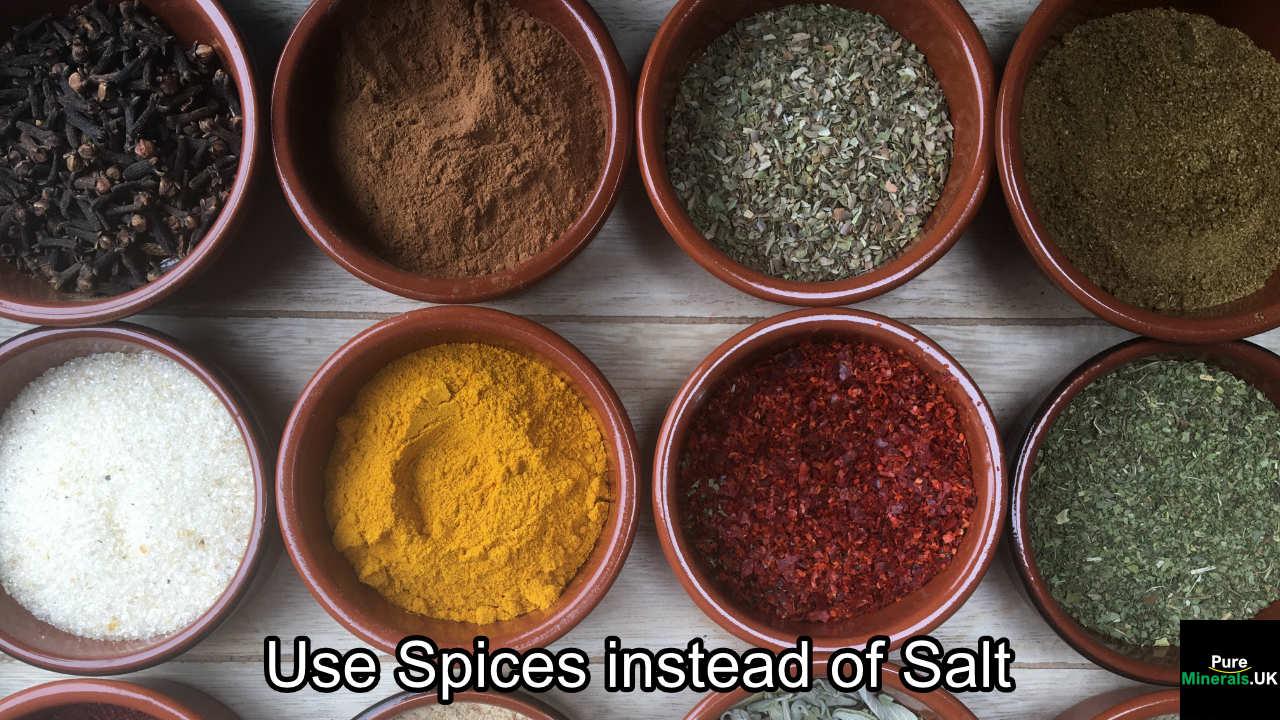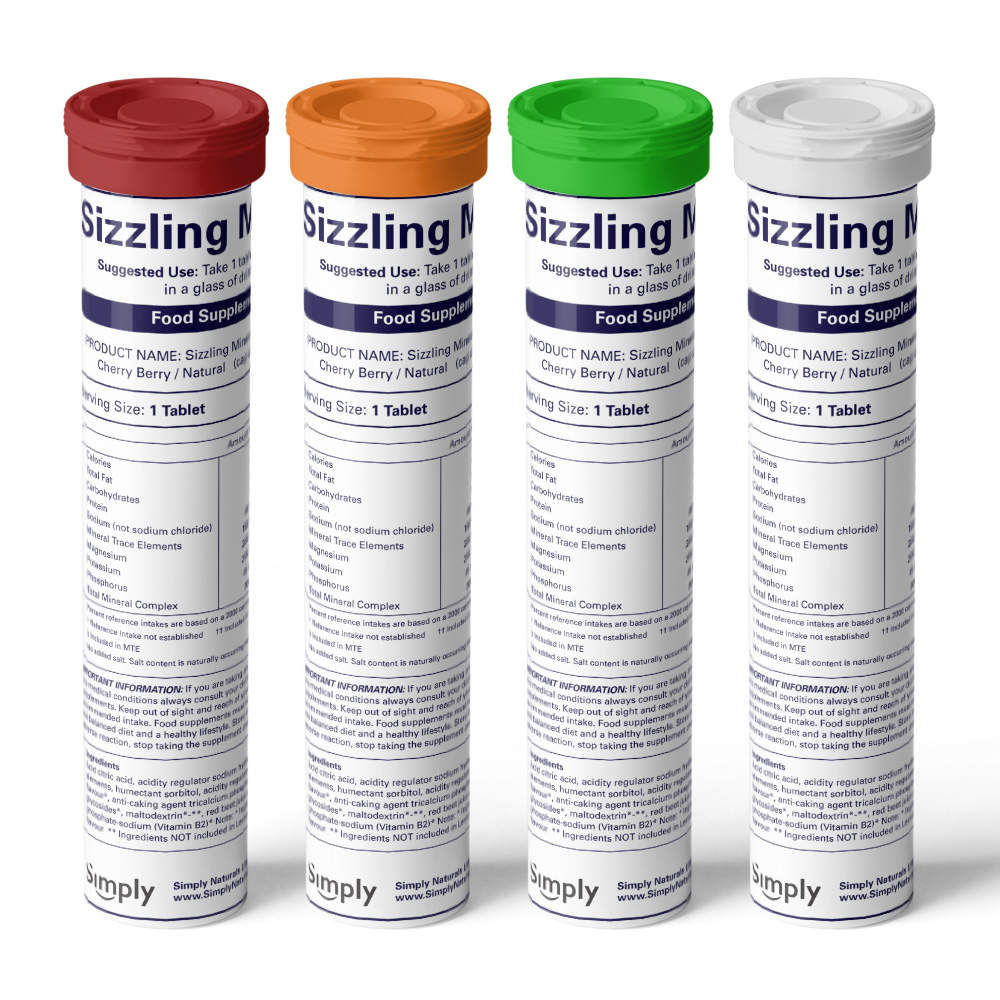Minerals Guide – SODIUM

How To Cut Down On Salt
Excessive salt intake can lead to high blood pressure, heart disease, and other health issues. But cutting down on salt means something different than sacrificing flavor or satisfaction. With the following five easy tips, you can reduce your salt intake and still enjoy delicious meals.
Why Do We Use So Much Salt?
We get our sodium from table salt: sodium chloride, NaCl. Salt usage is widespread in the food industry to enhance flavors, retain moisture, and give foods a longer shelf life because molds and bacteria struggle to live in salty environments. Indeed, salt was used before the invention of refrigeration. Roman Auxilia and soldiers received a salt allowance in their pay, hence the term “worth their salt.”
Sodium Pumps in Cells
91 percent of sodium ions (Na+) occur outside of cells, with 9 percent inside. Their place inside cells is taken by potassium ions (K+) due to millions of salt pumps in cell membranes forcing sodium ions out of the cells. For every three sodium ions pumped out, one potassium ion goes in.
It's all Electric
The pump is electrogenic, producing a net movement of positive charge outside each cell. In other words, there is a voltage difference across all cell membranes. This membrane potential averages about 70 millivolts (mV) in our nerve cells. The charge is vital, for without it, there would be no nervous system, and our five senses wouldn’t work. Each cell effectively acts as a tiny battery producing a minute electric current. And with moving charges, mutual magnetic fields generate. A third of the energy from glucose sugars is used by cells overall, and two-thirds is used by nerve cells.
We Need Sodium, But We Should Cut Down On Salt Intake
Without sodium in our diet, we would die. We are electric, as are all animals and plants. Although there is plenty of salt around, like in table salt from salt mines, bacon, salted foods, canned products, junk food, smoked fish, pickled products, sauces, yeast extracts, and stock cubes, we need to cut down on salt.
Dangers of Excess Salt
3 grams of salt per day is more than enough in our diets. Unfortunately, the overabundance of table salt in prepared foods has increased our consumption to 9 g to 12 g of salt each day! It seems we can’t avoid the stuff, which is why we see skyrocketing age-related rises in blood pressure in Western populations. In addition, the kidneys struggle to excrete the additional salt load, so the retained salt stimulates thirst and causes fluid retention, which consequently causes blood pressure to rise.
Why 3 g of Salt per day is the Max
It has been found that populations with a salt intake of less than 3 g per day do NOT show increased blood pressure with increasing age. For example, the Yanomami dwellers of the Amazon rainforest take less than 1 g of salt per day and never develop high blood pressure. So, to keep your blood pressure down, eat less salt, but never cut down on salt completely.
Salt Dosage
The UK RDA for sodium for adults aged 19 to 50 is 1,600 mg or 4 g of salt. That’s too high. Instead, try keeping it around 1 gram to seriously cut down on salt intake. Beware: all processed foods have hidden salt. It's a tough choice when you've gotten used to salty food.
Read Labels to Cut Down on Salt
One of the easiest ways to lower salt consumption is to read food labels and choose low-sodium options. Many packaged and processed foods contain huge amounts of sodium, so it's essential to check the labels and choose products with lower sodium content. Look for products labeled "low-sodium" or "no added salt." 0.5 g sodium means 2 g salt (multiply the sodium content in grams by 4 to get the salt weight), so 2 g of salt way too much for a single meal. 0.1 g sodium is equal to 0.4 g salt, which is okay. You can also choose fresh or frozen fruits and vegetables, which are naturally low in sodium to cut down on salt.
Example:
A 24g bag of Salt & Shake potato crisps in the has zero salt, but there is 0.6g salt in the tiny blue packet for those who prefer their potato crisps salty. 0.6 g is not a lot of salt, but it's a fifth of the 3 g upper daily salt intake limit.
Use Herbs and Spices to Add Flavor

Instead of relying on salt to add flavor to your meals, try using herbs and spices to cut down on salt. They add delicious flavor, and many herbs and spices also have health benefits. For example, garlic has been shown to lower blood pressure, while turmeric has anti-inflammatory properties. Experiment with different herbs and spices to find your favorites, and try using them in marinades, dressings, and rubs for meats and vegetables.
Cook at Home to Cut Down on Salt
One of the easiest ways to lower salt intake is to cook at home. When you prepare your meals, you have complete control over the ingredients and can choose to use less or no salt. Try experimenting with different herbs and spices to add flavor to your dishes instead of relying on salt. Cooking at home can also save money and help you maintain a healthier diet.
Limit Processed and Fast Foods Intake
Processed and fast junk foods are usually loaded with salt, significantly contributing to high salt intake. These foods are also typically high in calories, unhealthy fats, and added sugars, which can lead to weight gain and other health problems. One wonders why manufacturers are allowed to make them. So, to lower your salt consumption, limit your intake of processed and fast foods and opt for fresh, whole foods instead. When shopping for groceries, READ THE FOOD LABELS carefully and choose products with low sodium content. That’s the best way to cut down on salt.
To Cut Down On Salt Intake, Avoid:
Potassium vs. Sodium
Potassium flushes excess sodium from the body via the kidneys. A diet low in potassium is also linked with high blood pressure and stroke, especially with high salt intake diets. So, cut down on salt by increasing potassium-rich food intake with foods like fresh fruit, seafood, prune and orange juices, vegetables, and whole grains.
Sodium content in Sizzling Minerals
3.6 mg or 0.0036 g of hydrophilic sodium is present in a Sizzling Minerals wafer, plus over 70 other minerals and trace minerals.
Synonymous terms: fruits that reduce sodium in body; how to cut down salt in food; low salt diet for hypertension; medicine to reduce salt in body; how to reduce sodium in body naturally; reducing salt intake benefits; foods to lower-sodium intake; three ways to reduce sodium intake; sodium in your diet


